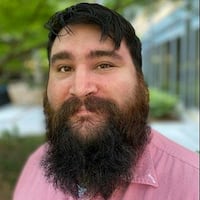What do physicians, researchers, creative arts therapists and writers all have in common? They could be integral parts of a plan to break down walls in health care. The industry’s workers are burned out, and relief is hard to find.
“A sinking feeling of heaviness in the core of your being,” one study participant said about the stress of working in health care. “It’s weight is infinite. Dark. Achy. Visceral. Hot and smoldering. Its smoke rises and circles your heart. Sometimes, all you can do is sit with it.”
Known simply as “a feeler,” the subject was one of many studied at the Colorado Resiliency Arts Lab.
With nearly two decades of experience in the field, a University of Colorado research group has been studying the intricacies of work-related stress on health care workers.
“Our aim is to use creative arts therapy as an intervention to improve the well-being of health care professionals and to restore their sense of purpose in these demanding work environments,” University of Colorado professor of medicine Marc Moss and CORAL program manager Rafaela Mantelli told the Conversation.
“As physicians who have worked in critical care and emergency medicine for many years, we think that this incorporation of creativity in health care is vital,” they said. “The nation’s health depends on the well-being of the health care workforce. We believe that incorporating creativity and the arts as a tool for building resiliency in health care workers could help shift the culture of emotional isolation that health care workers live in.”
A black cloud of burnout, emotional exhaustion, workplace violence and insufficient staffing hangs over the health care workplace. The International Council of Nurses labeled the worldwide nurse shortage a “global health emergency” back in 2023. By 2027, roughly a fifth of the United States’ nursing workforce will have walked out the door, according to the National Council of State Boards of Nursing.
“Long before the COVID-19 pandemic, research was documenting rampant stress and burnout among health care professionals,” the University of Colorado researchers said. “The effects of this crisis are widespread in the U.S. In 2022, Surgeon General Dr. Vivek Murthy raised concerns about the alarming levels of burnout in the health care community in the midst of the COVID-19 pandemic.”
“Studies show that if current trends continue, the U.S. will see a shortage of 1.1 million registered nurses, 3 million other health care workers and over 140,000 physicians by 2033,” Moss and Mantelli continued.
At the Colorado Resiliency Arts Lab, researchers teach health care workers how to process trauma and develop coping mechanisms through creative expression. From 2020 through 2023, the team completed six 12-week cohort studies that put their creative arts therapy interventions to the test.
Randomly assigned, participants were placed into groups: art, music, dance/movement and writing. For three months, they engaged in 90-minute sessions of creative activity. The researchers measured their levels of anxiety, depression, burnout, PTSD and job satisfaction.
“The results were eye-opening,” Moss and Mantelli reported. “Study participants experienced less burnout and expressed a lower desire to leave their jobs. Burnout scores for anxiety, depression, PTSD and emotional exhaustion decreased by 28%, 36%, 26% and 12%, respectively, in the participants receiving the creative arts therapy intervention. These improvements remained up to one year after the conclusion of the program.”
The study participants ranged from doctors and nurses to social workers, therapists and researchers.
“When I am given space to unmask and show all sides of who I am, I am creative and engaged,” one participant told researchers. “I think more deeply and clearly. I am more willing to take the risks necessary to have breakthroughs. I am a better colleague, mentor, friend, partner, and scientist. When I feel safe and supported, I can be whole.”
Find more stories like this one on our Pulse Facebook page.
About the Author
The Latest
Featured

